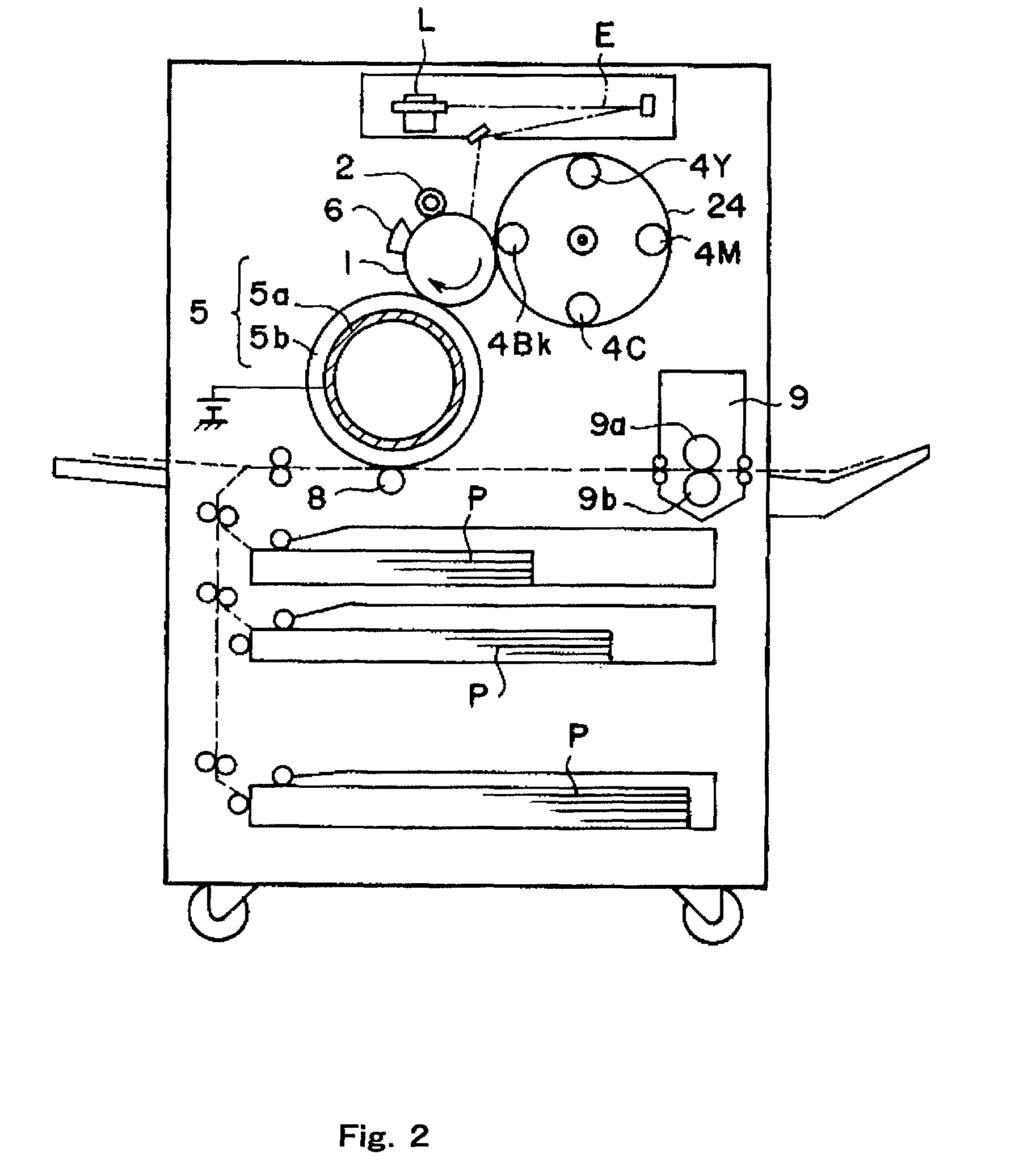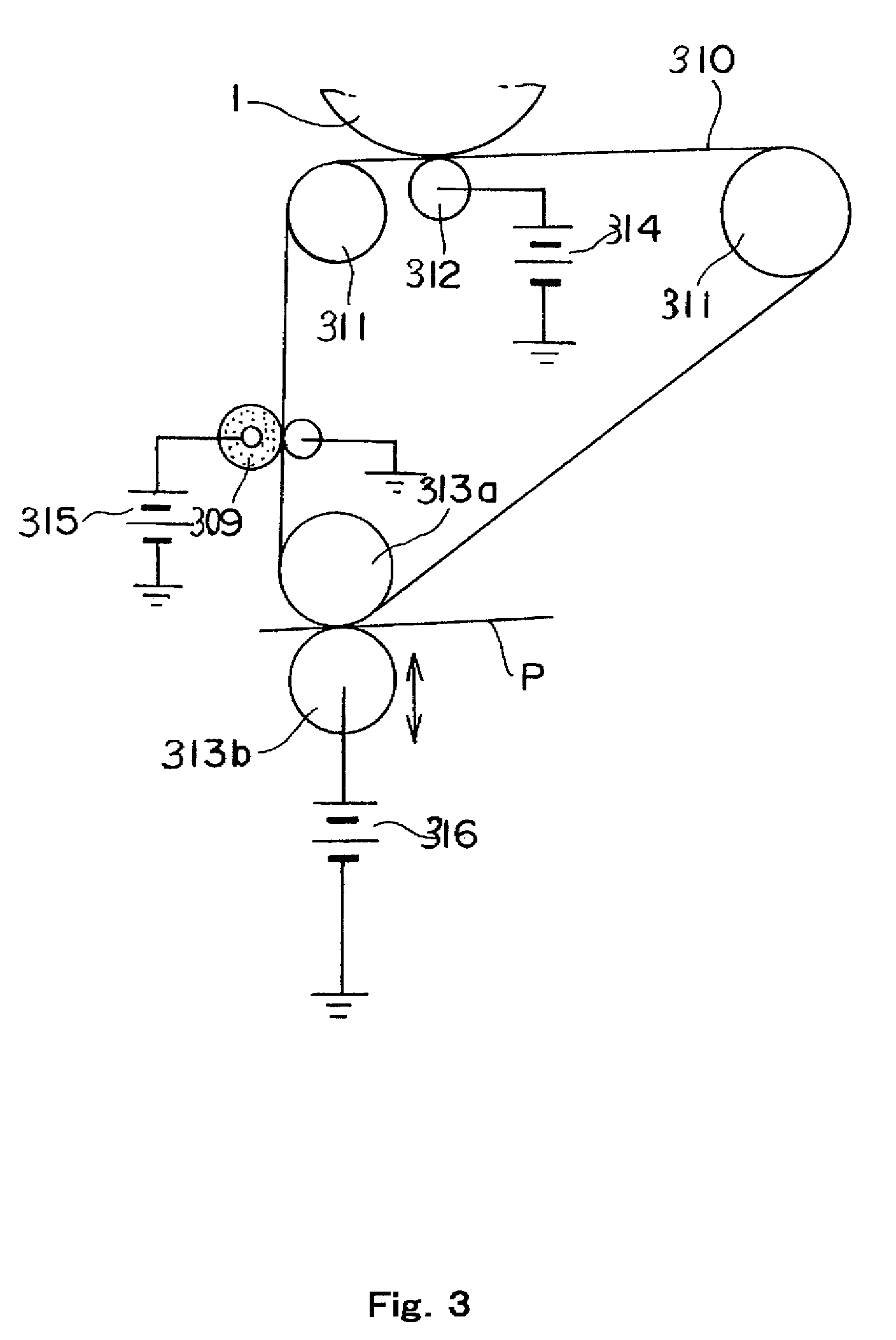Non-magnetic toner
a toner and non-magnetic technology, applied in the field of toners, can solve the problems of inability to obtain images, inability to store toners, and prone to collapse, and achieve the effects of low temperature fixability, high toughness, and small change in the characteristic of triboelectric charging
- Summary
- Abstract
- Description
- Claims
- Application Information
AI Technical Summary
Benefits of technology
Problems solved by technology
Method used
Image
Examples
example 1
Preparation of Aqueous Dispersion Medium
[0308]
Water350partsTricalcium phosphate3parts
[0309]The temperature of the mixture of the above components was held at 60° C. while the mixture was stirred with a high-speed stirring apparatus TK-homomixer at a speed of 12,000 rpm, whereby an aqueous dispersion medium was prepared.
(Preparation of Polymerizable Monomer Composition 1)
[0310]
Styrene65partsC.I. Pigment Blue 15:35partsNegative charge control agent (aluminum1part3,5-di-t-butyl salicylate compound)
[0311]The above prescriptions were dispersed with an Attritor at normal temperature for 5 hours, whereby a monomer mixture 1 was prepared.
[0312]Subsequently, the monomer mixture 1 was loaded into a stirring tank the temperature of which could be controlled, and its temperature was increased to 60° C.
[0313]Next, 10 parts of a Fischer-Tropsch wax (having the highest endothermic peak at 75° C.) were loaded into the above stirring tank, and the resultant mixture was continuously stirred for an ad...
example 2
[0356]Cyan Toner No. 2 was obtained in the same manner as in Example 1 except that the amount in which the polar resin was used was changed to 40 parts. Table 1 shows the physical properties of the toner, and Table 2 shows the results of the evaluation.
example 3
[0357]Cyan Toner No. 3 was obtained in the same manner as in Example 1 except that the amount in which the polar resin was used was changed to 10 parts. Table 1 shows the physical properties of the toner, and Table 2 shows the results of the evaluation.
PUM
 Login to View More
Login to View More Abstract
Description
Claims
Application Information
 Login to View More
Login to View More - R&D
- Intellectual Property
- Life Sciences
- Materials
- Tech Scout
- Unparalleled Data Quality
- Higher Quality Content
- 60% Fewer Hallucinations
Browse by: Latest US Patents, China's latest patents, Technical Efficacy Thesaurus, Application Domain, Technology Topic, Popular Technical Reports.
© 2025 PatSnap. All rights reserved.Legal|Privacy policy|Modern Slavery Act Transparency Statement|Sitemap|About US| Contact US: help@patsnap.com



